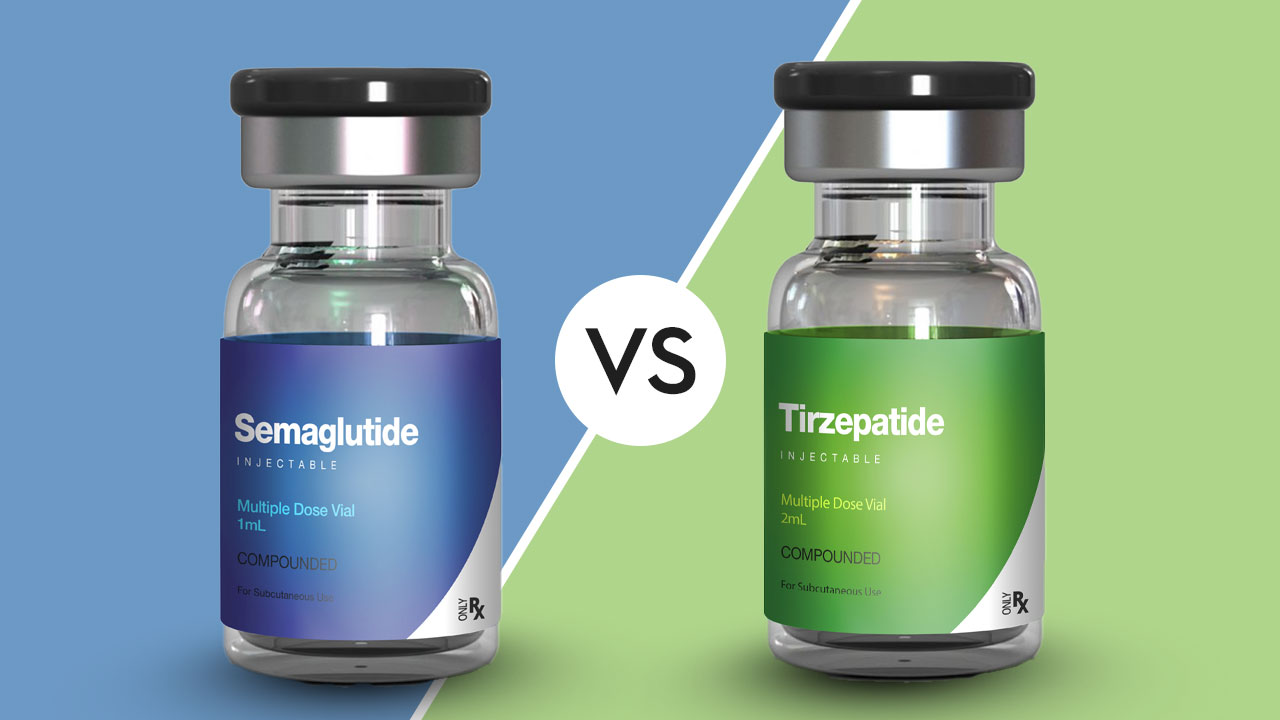Comparing Semaglutide and Tirzepatide for Weight Loss in Overweight and Obese Adults: Real-World Data Insights
Muna Said, PharmD
3 minutes

Comparing Semaglutide and Tirzepatide for Weight Loss in Overweight and Obese Adults: Real-World Data Insights
Obesity is a chronic disease with high prevalence and numerous comorbidities, such as type 2 diabetes (T2D), hypertension, ventilatory dysfunction, arthrosis, circulatory diseases, and depression. These comorbidities negatively impact health and increase morbidity and mortality. glucagon-like peptide 1 receptor agonist (GLP-1 RA), initially used to treat type 2 diabetes, have shown effectiveness in promoting weight loss. Historically, antiobesity medications have been limited, poorly tolerated, and modest in effect. However, newer therapies, including the GLP-1 RA semaglutide and the dual GLP-1 RA/gastric inhibitory polypeptide (GIP) agonist tirzepatide, have demonstrated substantial weight reduction in patients with and without type 2 diabetes in randomized clinical trials. Tirzepatide has shown greater weight loss than semaglutide in patients with type 2 diabetes, but head-to-head trials in patients with overweight or obesity are lacking. Additionally, the real-world effectiveness and adherence to these treatments may differ from clinical trials due to cost and limited insurance coverage for patients without T2D.
Notably, to address the lack of head-to-head comparisons in populations with overweight or obesity, a retrospective observational cohort study, published on July 8, 2024, aimed to compare on-treatment weight loss and rates of gastrointestinal adverse events (AEs) among adults with overweight or obesity receiving tirzepatide or semaglutide.
In this study, researchers analyzed data from adults with overweight or obesity who received semaglutide or tirzepatide between May 2022 and September 2023. Utilizing electronic health records (EHR) linked to dispensing information from various US healthcare systems, the study identified participants who had regular care in the year before treatment initiation, no prior use of GLP-1 RA, a prescription within 60 days before initiation, and an available baseline weight.
The main outcomes assessed included on-treatment weight change in a propensity score–matched population, focusing on the hazard of achieving 5%, 10%, and 15% or greater weight loss, as well as the percentage change in weight at 3, 6, and 12 months. Additionally, the hazards of gastrointestinal adverse events were compared. On-treatment weight outcomes were evaluated through November 3, 2023, with the analysis completed on April 3, 2024.
A total of 41,222 adults met the study criteria, with 32,029 receiving semaglutide and 9,193 receiving tirzepatide. After propensity score matching, 18,386 participants remained for analysis. The mean age of participants was 52.0 ± 12.9 years. The group included 12,970 females (70.5%), 14,182 white individuals (77.1%), 2,171 black individuals (11.8%), 354 asian individuals (1.9%), 1,679 individuals of other or unknown race, and 9,563 individuals (52.0%) with T2D. The mean baseline weight was 110 ± 25.8 kg. Follow-up was discontinued for 5,140 patients (55.9%) on tirzepatide and 4,823 patients (52.5%) on semaglutide.
The findings revealed that patients on tirzepatide were significantly more likely to achieve weight loss compared to those on semaglutide. Specifically, those on tirzepatide were more likely to reach weight loss of 5%, 10%, and 15%, with hazard ratios of 1.76 (95% confidence interval [CI] 1.68 to 1.84), 2.54 (95% CI 2.37 to 2.73), and 3.24 (95% CI 2.91 to 3.61), respectively. On-treatment weight changes were more substantial for tirzepatide users, showing reductions of −2.4% at 3 months (95% CI −2.5% to −2.2%), −4.3% at 6 months (95% CI −4.7% to −4.0%), and −6.9% at 12 months (95% CI −7.9% to −5.8%). Rates of gastrointestinal AEs were comparable between the tirzepatide and semaglutide groups. In stratified analyses, individuals without T2D had greater reductions in body weight compared to those with T2D, regardless of whether they were treated with tirzepatide or semaglutide. However, tirzepatide still led to significantly greater weight loss across all groups. Interestingly, these results were consistent with findings seen in clinical trials, which also found that individuals without T2D experienced more significant weight reductions than those with T2D. The reasons for this disparity remain unclear, but it is suggested that it could be related to differences in motivation or weight loss strategies between the groups. Overall, further investigation is needed to understand these factors.
Based on these findings, it was concluded that individuals with overweight or obesity who were treated with tirzepatide were significantly more likely to achieve clinically meaningful weight loss and experience greater reductions in body weight compared to those treated with semaglutide. This effect was consistent across subgroups with and without T2D. Despite these insightful findings, several limitations should be noted. The study is subject to biases inherent in retrospective research, as its reliance on EHRs may lead to underreporting of AEs compared to the more rigorous AE tracking used in clinical trials. Additionally, weight changes were recorded only during patient visits, which may result in delays in capturing the true timing of these changes. Nevertheless, these results provide real-world evidence on the effectiveness of tirzepatide and semaglutide, offering important insights into their comparative impact on weight loss and the practical considerations of their use outside of controlled clinical settings.
References:
- Popoviciu MS, Păduraru L, Yahya G, Metwally K, Cavalu S. Emerging Role of GLP-1 Agonists in Obesity: A Comprehensive Review of Randomised Controlled Trials. Int J Mol Sci. 2023;24(13):10449. Published 2023 Jun 21. doi:10.3390/ijms241310449
- Rodriguez PJ, Goodwin Cartwright BM, Gratzl S, et al. Semaglutide vs Tirzepatide for Weight Loss in Adults With Overweight or Obesity. JAMA Intern Med. Published online July 8, 2024. doi:10.1001/jamainternmed.2024.2525
Share